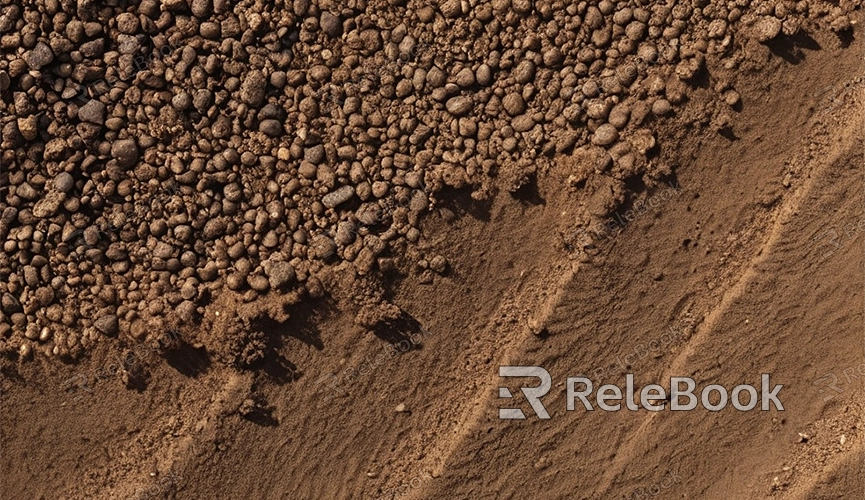Terrain Texture in Blender
Terrain texture is a design element used to simulate the texture and appearance of ground surfaces. In Blender, applying terrain texture can give 3D models a realistic ground appearance. Using dirt ground texture in Blender aims to enhance the realism and depth of scenes, especially in rendering projects involving natural environments, outdoor scenes, or any scenario requiring detailed ground representation. This texture simulates the natural appearance of soil, including its color, granularity, moisture, and possible impurities such as stones, leaves, and other organic matter. By applying dirt ground texture to the ground part of a 3D model or scene, the overall quality and immersion of the work can be greatly enhanced.

This 3D texture can be downloaded from Relebook and applied to 3D models or scene rendering using the following steps:
1. Import Model: Import the model that needs to have the terrain texture applied into the Blender project.
2. Import Texture: Obtain the dirt ground texture material, import it into Blender, and apply it to the surface of the model.
3. Adjust Mapping: Adjust the texture mapping according to the size and shape of the model to achieve a natural effect on the model's surface.
4. Adjust Material Parameters: Adjust the material parameters, such as color and bumpiness, to achieve the desired soil effect.
5. Add Details: Adjust the detail parameters of the texture to enhance the texture and feel of the ground, making it more realistic.
Different parameter adjustments yield different rendering effects. Here are common rendering scenarios for this 3D texture in Blender:
1. Scene Setup: Used to simulate outdoor scenes such as forests and plains, adding realism to the scene.
2. Architectural Landscaping: Applied in architectural landscaping designs such as gardens and courtyards to add natural ground texture to the landscape.
3. Gaming Environments: Used in game design to give different terrains and textures to the ground of game scenes, enhancing the gaming experience.
4. Animation Production: Applied in animation production to simulate ground textures in different scenes, adding realism and appeal to animations.
5. Product Displays: Used in product display scene layouts to add realistic ground effects, enhancing the product's image.
Using this texture enhances the realism of object surfaces and increases visual complexity, especially when simulating objects made of cast iron. By simulating the unique rough and uneven surface characteristics of cast iron, cast iron texture adds extra detail and texture to models. This texture is essential for creating 3D models with realistic metal appearances, whether in industrial design, architectural visualization, game development, or film production.
Enhancing Realism: By accurately simulating natural features of cast iron surfaces such as roughness, minor cracks, and irregular gloss, cast iron texture increases the realism of objects, making them appear more like real cast iron.
Adding Visual Depth: Cast iron texture adds extra visual depth and detail to models by adding subtle surface irregularities, enhancing the overall visual appeal.
Enhancing Material Sensation: In 3D rendering, using textures correctly can significantly enhance the sensation of materials, allowing viewers to understand what materials objects are made of through visual clues.
Cast iron texture is one of the commonly used texture resources in Blender. Through proper use and adjustment, it can add detail, realism, and visual effects to 3D models. Flexibly applying cast iron texture in different scenes and projects can add a sturdy, rugged appearance to works, enhancing rendering effects and aesthetics.

